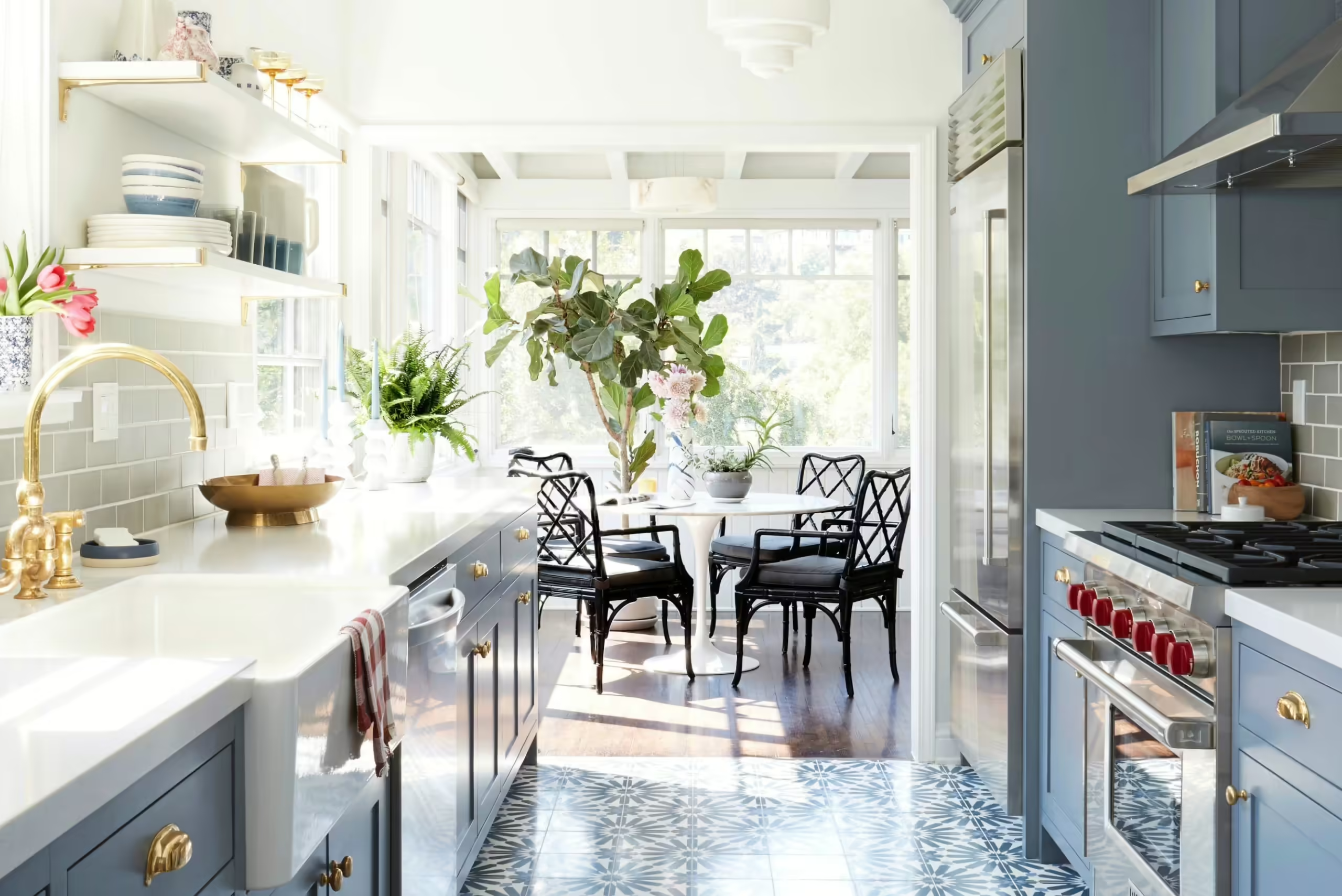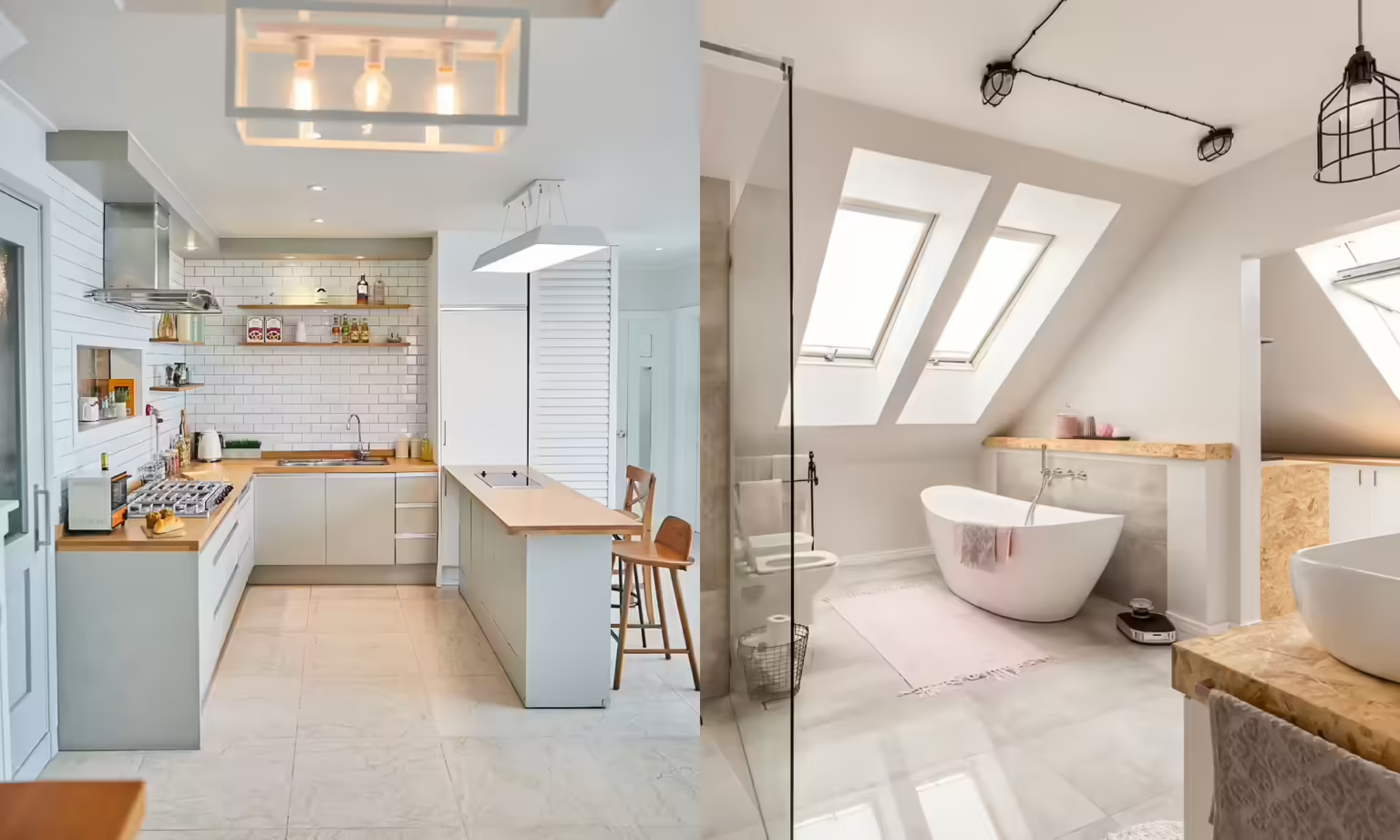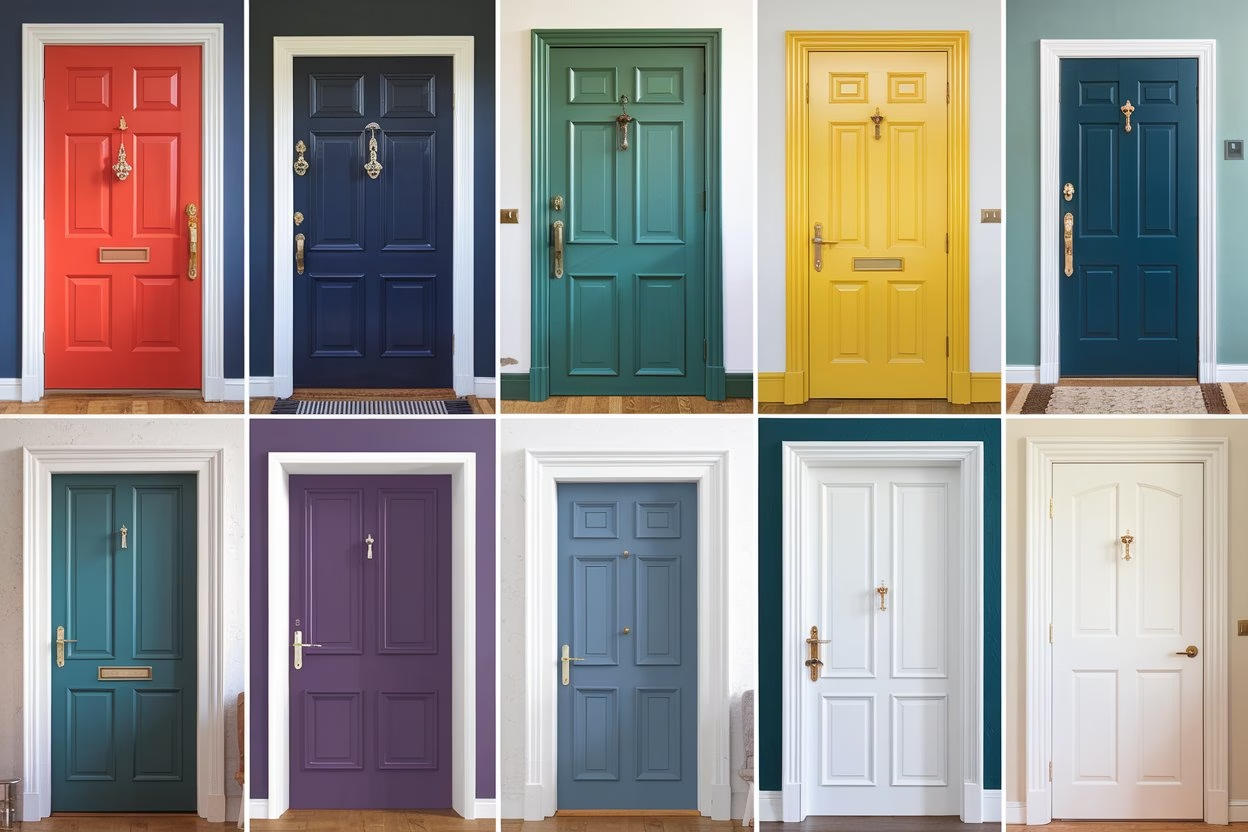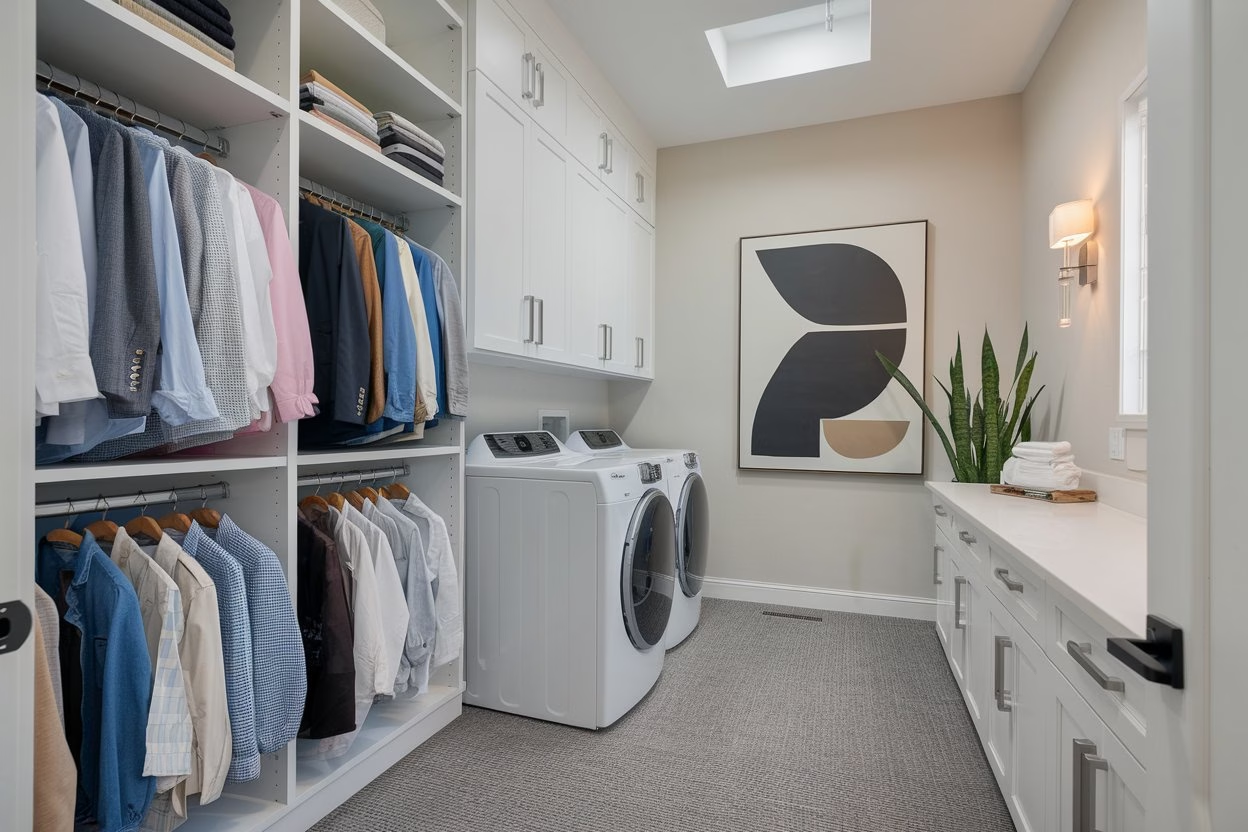Kitchen Floating Shelves have gained popularity in kitchen design due to their chic and practical storage solutions. With a modern and streamlined appearance, these shelves enhance both the aesthetics and functionality of the space. Utilizing floating shelves in your kitchen allows for easy display of essential items, creating an open and airy atmosphere while maximizing available space. In this post, we will explore the benefits of incorporating floating shelves in your kitchen and guide you through the installation process.
Positive aspects of Kitchen Floating Shelves
Space-saving
Indeed, floating shelves in the kitchen are an excellent choice for compact kitchens or spaces with limited room. Their design creates a sense of openness and lightness, as they appear to “float” on the wall without the need for bulky brackets or supports. This minimalistic approach to storage maximizes the use of vertical space while minimizing the visual clutter often associated with traditional cabinets. As a result, floating shelves create a more spacious and organized look, making them a perfect solution for smaller kitchens and tight quarters.
Open and Airy
Absolutely, floating shelves have a unique ability to create an open and expansive feel in the kitchen. Unlike closed cabinets that can make a kitchen feel boxed in, floating shelves offer a visually light and airy look. By exposing the wall behind them and eliminating the need for cabinet doors, they provide an uninterrupted view of the kitchen space.
Versatility
ndeed, floating shelves offer a wide range of design options for your kitchen. With their availability in various materials, finishes, and sizes, you have the flexibility to customize them according to your kitchen’s style and requirements. Whether you prefer a rustic look with reclaimed wood shelves, a modern vibe with sleek metal shelves, or a classic touch with elegant glass shelves, the choices are abundant.
Additionally, the ability to modify the size of the floating shelves allows you to fit them perfectly into your kitchen layout, making the most of the available space. You can install long shelves along a whole wall or opt for smaller shelves strategically placed in corners or above countertops.
Simple Access:
Moreover, your kitchen staples are not only stylishly displayed but also conveniently accessible with open shelves. This, in turn, significantly improves the efficiency of meal preparation and cooking.
How to Install Kitchen Floating Shelves?
Plan and Assess Kitchen Floating Shelves
Additionally, before installing the Kitchen Floating Shelves, it is essential to plan out their configuration meticulously. Consider factors such as the ideal shelf length, height, and appropriate distance between them. After careful planning, mark the precise locations for installation using a level and measuring tape to ensure a perfect setup.

where to put Kitchen Floating Shelves?
In the kitchen, floating shelves can be strategically placed to optimize storage and enhance the overall appearance of the space. Here are some ideal locations to consider for installing floating shelves in the kitchen:
Located Above Countertops:
To provide additional storage for regularly used kitchen items such as dishes, glasses, and spices, consider installing floating shelves above the counters. This not only adds a beautiful flair to the kitchen but also makes these items conveniently accessible while cooking.

In front of the stove or range:
To keep kitchen essentials like cooking oils, seasonings, and tools within easy reach while preparing meals, consider placing floating shelves next to the range or stove. This convenient setup allows for quick access to cooking necessities during the cooking process.

Close to the sink:
Dishwashing essentials, such as dish soap, sponges, and cleaning materials, can be neatly stored on floating shelves surrounding the sink area. These shelves not only keep the sink area organized but also offer an opportunity to display decorative objects like miniature plants or stylish kitchen accessories, adding a touch of charm to the space.

Upper Cabinets Below:
By installing floating shelves in the area behind top cabinets, you can make the most of the often underutilized space. This area becomes an ideal spot to store small kitchen appliances or neatly display a collection of coffee or tea cups, adding both functionality and a decorative touch to your kitchen.

Empty Wall Spaces:
To fully utilize any vacant wall areas in the kitchen, consider adding floating shelves. These shelves not only provide practical storage for cookbooks and other kitchen necessities but also offer an opportunity for artistic displays, making the kitchen both functional and visually appealing.

Corner Areas:
Floating shelves are an excellent solution for corner locations in the kitchen where installing standard cabinets can be challenging. By utilizing floating shelves in the corners, you can create a stylish and functional storage solution that makes the most of otherwise wasted space. This allows you to maximize the storage capacity of your kitchen while adding a contemporary touch to the overall design.

Breakfast Area or Dining Room:
Indeed, installing floating shelves over or next to a breakfast nook or other eating space in the kitchen offers an opportunity to store additional dishes, glasses, and decorative items. By utilizing this space, you can create a practical and visually appealing storage solution that complements the dining area. This ensures that everything you need for mealtime is easily accessible while adding a touch of style and charm to the kitchen decor.

Pantry space:
Absolutely, incorporating floating shelves in a pantry or pantry-like storage area is a clever way to keep frequently used items easily accessible. These shelves provide an efficient storage solution for storing pantry staples such as canned goods, dry goods, and snacks. By organizing items on the Kitchen Floating Shelves, you can quickly find what you need, making meal preparation and cooking more efficient. Additionally, the open design of the shelves adds a modern touch to the pantry area and allows you to showcase your favorite kitchen essentials and decorative items.

Locate Wall Studs for your Kitchen Floating Shelves
To ensure the floating shelves are properly supported, it’s crucial to locate the wall studs. A stud finder can be used to easily identify the position of the studs behind the wall, providing a strong and secure foundation for the shelves.

Install equipment
Install the floating shelf hardware following the instructions provided by the manufacturer. Firmly secure the brackets or support rods into the wall studs to ensure the shelves are stable and securely attached to the wall.

Finished touches
Correct! After positioning the floating shelves in the desired locations, it’s essential to verify their alignment and levelness once again to ensure a secure and visually pleasing installation. Once you’re satisfied with their placement, use the provided screws or fasteners to firmly attach the shelves to the hardware that was previously installed. Taking the time to properly fasten the shelves will ensure they are stable and safe to hold the intended items, whether it’s kitchen essentials or decorative pieces.

How to Organize and decorate Floating Shelves in the Kitchen?
Absolutely! Once your floating shelves are securely installed, it’s time to showcase your kitchen essentials and decorative items in an aesthetically pleasing manner. Arrange dishes, glasses, and cookbooks on the shelves to create a stylish and functional display. You can mix and match different items, playing with colors and textures to add visual interest.
Incorporate decorative elements like small plants, kitchen accessories, or artwork to enhance the overall look. The open and airy design of floating shelves allows you to curate a personalized and charming display that complements the overall design of your kitchen.










